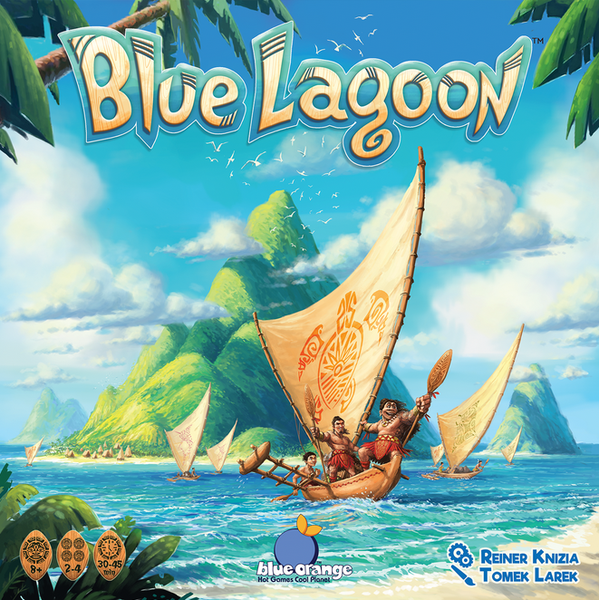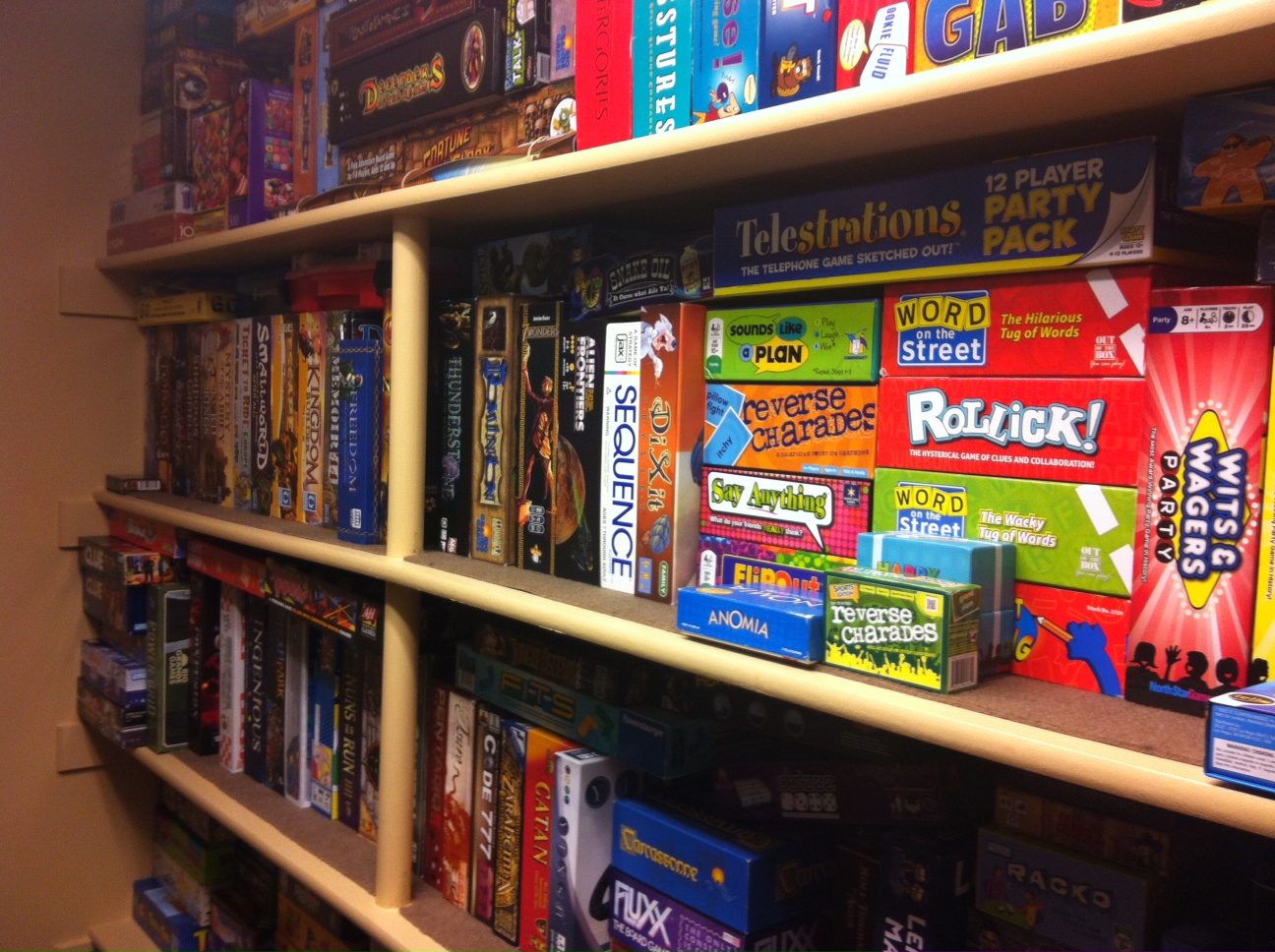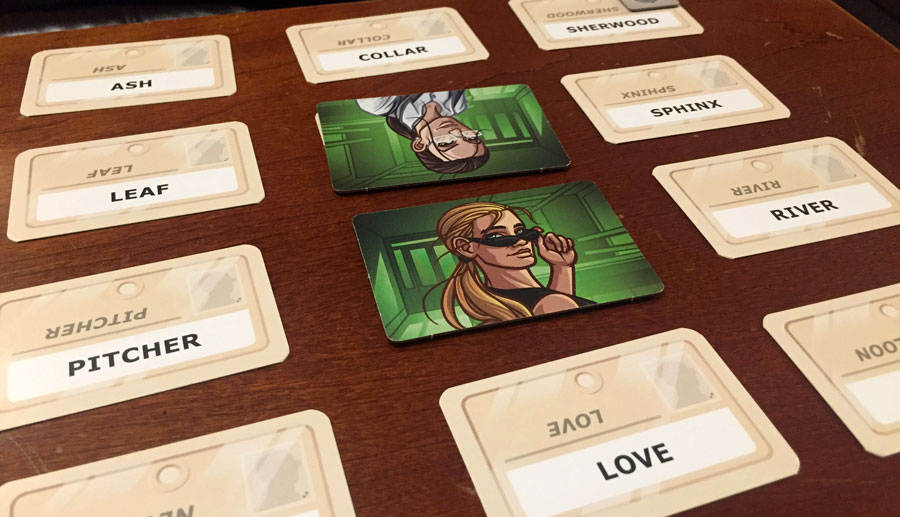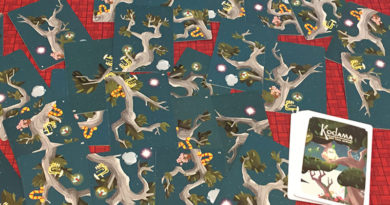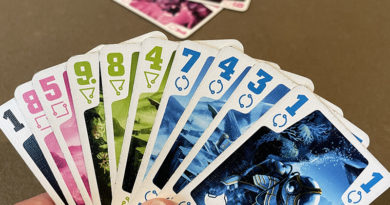Scarabya board game review
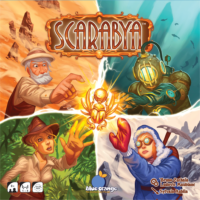
You’re an experienced archeologist, renowned from all the golden Scarab relics you’ve found all around the world.
Well, fame won’t last long without others trying to jump in on your claim as the best.
It’s time to settle this challenge once and for all in Scarabya!
Scarabya is the last of 3 family board game reviews of Gen Con 2018 new releases from Blue Orange Games and it’s also the one we’ve played the most!
(We may not know the official way to pronounce it, but we sure enjoy playing it.)
How to play Scarabya
Scarabya is a tile-laying game where players have their own player board representing a different world area: Egyptian desert, the Amazon rainforest, the Bermuda triangle, and even frozen Antarctica.
Players also have the same set of shaped tiles they’ll place on their board to create “excavation” areas. They’ll score points by the size of their excavation areas and the number of Scarab relics found in each at the end of the game.
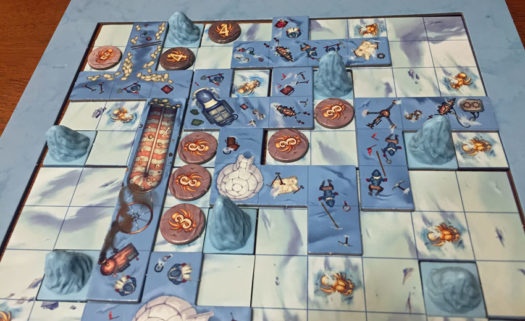
To begin, each player takes 8 rocks, 12 tiles, 4 parts of a player board (archaeological site), and a frame of their chosen color.
One player constructs their archaeological site by placing the 4 parts together inside the frame however they’d like. Then all players match the layout for their own archaeological sites. They also place rocks in the open spaces in the boards.
The Mission Cards are shuffled and players are ready to go.
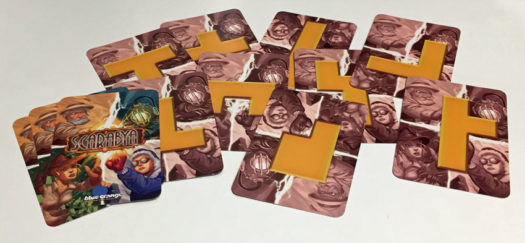
There aren’t any players turns in Scarabya. Instead, all players play simultaneously.
One player flips over the top Mission Card and all players must place that tile in their archaeological site. The first tile played must cover at least one of the center squares of their site.
From then on, when placing a tile players must place it so that it touches the edge of a previously placed tile. Tiles must also stay completely within the frame and fit around rocks. Tiles cannot overlap other tiles, but they can cover Scarab symbols.
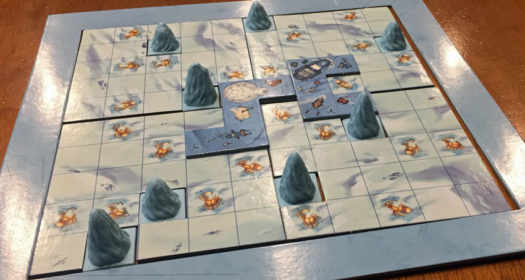
Players try to create “excavation areas” that are 4 or fewer spaces on their board. Such an area can be bordered by tiles, rocks, and the frame itself.
When a player creates an excavation area of 4 or less spaces, they score the Scarabs in that area.
Each Scarab is worth the number of spaces in that excavation area.
For example, if a player creates an excavation area of 3 spaces which has 2 Scarabs in it, then each Scarab there will be worth 3 points (total of 6 points in that area).
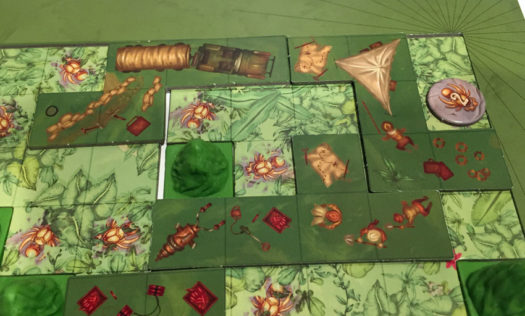
The player then takes a point token of that value and places it on top of each Scarab – indicating that it has been scored.
The game ends after the 12th card has been drawn and corresponding tile placed.
Players then add up all the point tokens from the Scarabs and the player with the most points wins!
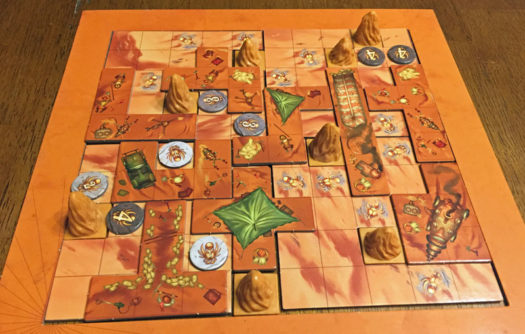
The rule book also has a couple of game play variants for different challenges. One of those options is a Solo variant where a player’s goal is to cover every Scarab on their board instead of excavating them!
Can the whole family enjoy Scarabya?
Absolutely!
Scarabya is another wonderful family board game from Blue Orange Games. And like many tile-laying games, it will appeal to a broad age range.
We’re big fans of tile-laying games. And while a lot of them look the same, we’re happy to report that Scarabya’s game play keeps it unique.
It also means we have a lot of other games we can compare to Scarabya.
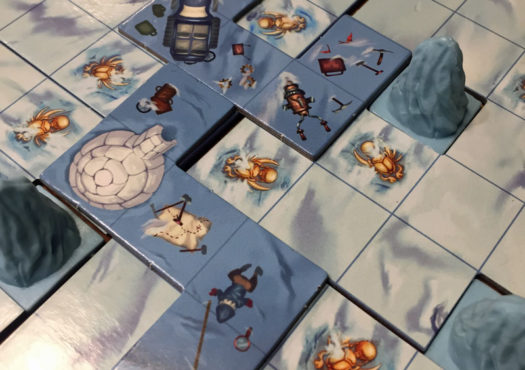
A number of people have asked us how it compares to games like Patchwork, Barenpark, Cottage Garden, or Indian Summer – because they all use polyominoes shaped (Tetris-like) pieces. They see the shapes and the individual player boards and think the game play will be the same too.
However, those games have players competing for the various shaped pieces to place on their player boards. In Scarabya, all players have the exact same pieces as well as the exact same board layout.
We think Scarabya is a bit more like City Square Off because it’s a game where everyone is placing the same shaped tile at the same time to their board in an efficient way. In both games, a player turns over the next card to show what piece must be placed next.
The big difference is that in City Square Off, players are trying to be the fill their board without any open spaces. The first player to build outside their boundary loses. Whereas in Scarabya, players are trying to create open spaces throughout their board that include Scarab symbols.
So the thought processes of how to place your pieces jumps up a big notch.
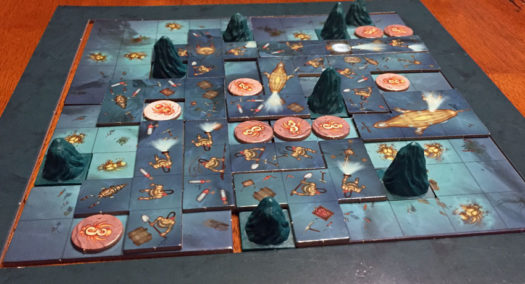
Placing polyominoes on a board is a great activity for young kids to develop their spacial skills. But it’s also great for people of any age to keep their minds sharp.
With the addition of rocks around the board and Scarab relics to enclose, Scarabya delivers a different level of thinking. Players must figure out how best to build out their tiles to make the scarabs they capture be as valuable as they can. In addition, players that stay aware of their remaining shapes can also plan around what might come next.
And in that sense, there’s a good balance of luck and strategy.
While everyone starts with the exact same board layout and places the same pieces at the same time, after a couple pieces are out, everyone’s board will be quite different. And the luck of the draw for which tiles get placed next will impact everyone differently.
It’s like a puzzle to solve with the various puzzle pieces to place coming at you randomly.
Which is why we keep coming back to Scarabya over and over!
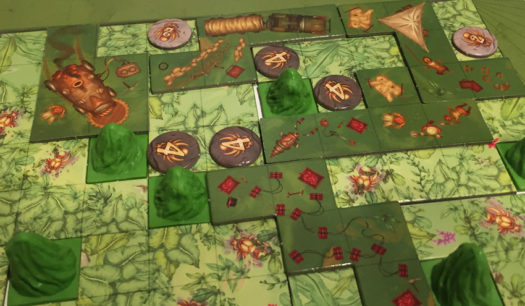
How does Scarabya score on our “Let’s Play Again” game meter?
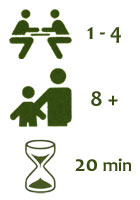 We’ve played Scarabya a bunch for a number of reasons. For starters, it’s very simple to understand how to play. We can just dive right in without needing a rules refresher.
We’ve played Scarabya a bunch for a number of reasons. For starters, it’s very simple to understand how to play. We can just dive right in without needing a rules refresher.
We also love the variable set up each game. The combinations of board layouts seems endless. So while the game play is the same, the different layouts and the randomness of when different tiles are placed makes each game a unique puzzle challenge.
It also plays very quickly because there aren’t any player turns. There’s no down time. So it’s easy (and compelling) to play games back-to-back.
But the biggest reason why we keep playing Scarabya is because of the great mental challenge.
It’s a fun challenge trying to efficiently place tiles to enclose Scarabs in the best patterns to score a lot of points. And knowing that our opponents have the exact same set up means each game is a challenge to see who can do it the best. There’s a lot of satisfaction in scoring the most points in the game. Yet when we don’t get a good score, we also want to dive right in again to see if we can do better.
We highly recommend Scarabya for your family game night.
We’d like to thank Blue Orange Games for a review copy of Scarabya.

